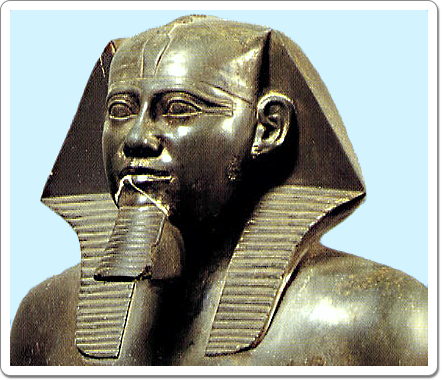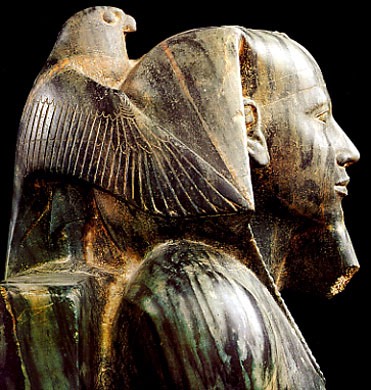Schist statue of Khefren on a throne.
Source: Ziegler e.a., Art Egyptien, pp. 216-217.
This schist statue of Khefren was found in 1860 in a pit inside the Valley Temple of the funerary complex of this king in Giza by French archaeologist Mariette. After Khefren's funerary cult had stopped and the complex was no longer used, many of the statues that were once the object of the cult had been thrown in this pit, there to be found by archaeologists many centuries later.
There can be no doubt about the identification of this king: his name is carved into the front of the throne, next to the his leg.
Khefren is represented wearing the nemes headdress, seated on a cube-shaped throne. His face has been executed with great attention to detail. The rounded face, narrow eyes and nose and fairly small mouth are typical of statues representing Khefren. The false beard confirms his royalty.
The king's left hand is resting on his knee, but his right hand is clenched into a fist, giving the statue an air of authority.
The left and right sides of the throne are decorated with the so-called sema-tawi symbol: the two heraldic plants of Upper and Lower Egypt, tied together around a central sign that means 'union', symbolising the unity between the two traditional parts of the country.

This statue is one of many examples of the high craftsmanship during Khefren's reign.
Source: Ziegler e.a., Art Egyptien, pp. 216-217.
